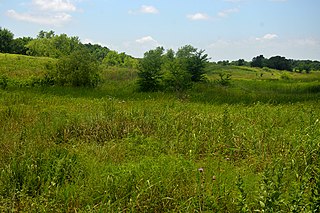
Lupinus polyphyllus, the large-leaved lupine, big-leaved lupine, many-leaved lupine, blue-pod lupine, or, primarily in cultivation, garden lupin, is a species of lupine (lupin) native to western North America from southern Alaska and British Columbia and western Wyoming, and south to Utah and California. It commonly grows along streams and creeks, preferring moist habitats.

Lupinus, commonly known as lupin, lupine, or regionally bluebonnet etc., is a genus of plants in the legume family Fabaceae. The genus includes over 199 species, with centers of diversity in North and South America. Smaller centers occur in North Africa and the Mediterranean. They are widely cultivated, both as a food source and as ornamental plants, but are invasive to some areas.

Cercis canadensis, the eastern redbud, is a large deciduous shrub or small tree, native to eastern North America from southern Michigan south to central Mexico, west to New Mexico. Species thrive as far west as California and as far north as southern Ontario. It is the state tree of Oklahoma. The prevalence of the so-called "Columbus strain" has seen the residents of Columbus, Wisconsin embrace the plant into their city's identity. Known as the "Redbud City," the town hosts "Redbud Day" annually the Saturday before Mother's Day, organizing a variety of themed events to recognize the tree.

The Edwards Plateau is a geographic region forming the crossroads of Central, South and West Texas, United States. It is named in honor of Haden Edwards. It is bounded by the Balcones Fault to the south and east; the Llano Uplift and the Llano Estacado to the north; and the Pecos River and Chihuahuan Desert to the west. San Angelo, Austin, San Antonio and Del Rio roughly outline the area. The plateau, especially its southeast portion, is also known as the Texas Hill Country.

The Battle of the Alamo was a pivotal event and military engagement in the Texas Revolution. Following a 13-day siege, Mexican troops under President General Antonio López de Santa Anna reclaimed the Alamo Mission near San Antonio de Béxar, killing most of the occupants. Santa Anna's refusal to take prisoners during the battle inspired many Texians and Tejanos to join the Texian Army. Motivated by a desire for revenge, as well as their written desire to preserve a border open to immigration and the importation and practice of slavery, the Texians defeated the Mexican Army at the Battle of San Jacinto, on April 21, 1836, ending the conquering of the Mexican state of Coahuila y Tejas by the newly formed Republic of Texas.

The Hall of State is a building in Dallas's Fair Park that commemorates the history of the U.S. state of Texas and is considered one of the best examples of Art Deco architecture in the state. It was designed and built for the Texas Centennial Exposition.
Maroon is a brownish crimson color that takes its name from the French word marron, or chestnut. "Marron" is also one of the French translations for "brown".

Attwater Prairie Chicken National Wildlife Refuge is a federally protected refugium encompassing one of the largest remnants of coastal prairie habitat remaining in southeast Texas, United States, and home to one of the last populations of critically endangered Attwater's prairie chickens, a ground-dwelling grouse of the coastal prairie ecosystem.

(Robert) Julian Onderdonk was a Texan Impressionist painter, often called "the father of Texas painting."

The Texas Blackland Prairies are a temperate grassland ecoregion located in Texas that runs roughly 300 miles (480 km) from the Red River in North Texas to San Antonio in the south. The prairie was named after its rich, dark soil. Less than 1% of the original Blackland prairie vegetation remains, scattered across Texas in parcels.

The Western Gulf coastal grasslands are a subtropical grassland ecoregion of the southern United States and northeastern Mexico. It is known in Louisiana as the "Cajun Prairie", Texas as "Coastal Prairie," and as the Tamaulipan pastizal in Mexico.

Lupinus texensis, the Texas bluebonnet or Texas lupine is a species of lupine found in Texas, Louisiana, Arkansas and the Mexican states of Coahuila, Nuevo León, and Tamaulipas. With other related species of lupines also called bluebonnets, it is the state flower of Texas.
The central Texas pocket gopher or Llano pocket gopher is a species of rodent in the family Geomyidae. It is endemic to central Texas in the United States.

Alamo Heights is an incorporated city that is surrounded by the city of San Antonio in Bexar County in the U.S. state of Texas. At the time of the 2020 census, the population of Alamo Heights was 7,357. It is part of the Greater San Antonio metropolitan area. A portion of the University of the Incarnate Word is in Alamo Heights.

Lupinus havardii is a species of lupine known by the common names Big Bend bluebonnet and Chisos bluebonnet. It is native to Texas and Chihuahua, where it blooms between January and June. Its habitat includes gravelly, fine talus, and the alluvial soils in the desert, valleys, hills, and mountain slopes.

The Texas A&M–Texas Tech football rivalry is an American college football rivalry between the Texas A&M Aggies football team of Texas A&M University and Texas Tech Red Raiders football team of Texas Tech University. The series began in 1927. The rivalry had continued uninterrupted since 1957 when the two schools became conference rivals. Texas A&M leads the series 37–32–1. Texas A&M started the series with a 12–3 advantage while the two teams played each other as non-conference opponents from 1927–1955. Texas Tech led with a 2–1 record during its probationary membership in the Southwest Conference from 1957–59. Texas A&M led the series during the Southwest Conference years (1960–95) with an 18–17–1 record. Texas Tech led the series during the Big 12 Conference years (1996–2011) with a 10–6 record. In summary, Texas A&M dominated the series during the early years (1927–1955) with a 12–3 advantage, while Texas Tech leads the series in the modern era (1957–2011) with a 29–25–1 advantage. Both teams are tied with six games each for the longest winning streak. Texas Tech holds the longest uninterrupted winning streak of the series, six games between 1968 and 1973, while Texas A&M has the longest nonconsecutive winning streak, six games in 1927, 1932 and 1942 through 1945. Texas A&M currently holds a three-game winning streak but with their departure from the Big 12 Conference in 2012, it is uncertain if the rivalry will continue in the future.
Porfirio Salinas was an early Texas landscape painter who is recognized for his depictions of the Texas Hill Country in the springtime. He was one of the first Mexican American artists to become nationally recognized for his paintings. He was described by The New York Times as being United States President Lyndon B. Johnson's favorite painter. Works by Salinas are displayed in the Texas State Capitol, the Texas Governor's Mansion and in a number of museums including the Witte Museum in San Antonio, Texas, and the Panhandle-Plains Historical Museum.

Bluebonnet is a name given to any of a number of purple-flowered or blue-flowered species of the genus Lupinus predominantly found in southwestern United States and is collectively the state flower of Texas. The shape of the petals on the flower resembles the bonnet worn by pioneer women to shield them from the sun. Species often called bluebonnets include:

Lupinus subcarnosus, the sandy land bluebonnet or Texas bluebonnet, is a species of flowering plant in the family Fabaceae. It is native to southeastern Texas and northeastern Mexico. A winter annual reaching 40 cm (16 in), it prefers deep sandy soils. With other related species of lupines also called bluebonnets, it is the state flower of Texas.















